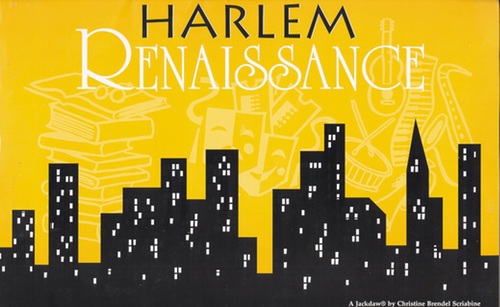
Harlem Renaissance
Your students will be thrilled to learn what the Harlem Renaissance was all about and why it was so very important to our culture. The creative outpouring of the Harlem Renaissance of the 1920s is captured in this portfolio's colorful art, photos, manuscripts, and posters. The black intellectuals, artists, and writers of the era are explored in great detail. Here is an ideal resource for both the Social Studies and Literature curriculum. This portfolio includes a Student Guide with reproducible activities and a timeline that presents the exciting events between 1903 and 1930. It also includes a recommended reading list. 5 Illustrated Broadsheet Essays: * Harlem * The New Negro * Arts of the Renaissance: Visual, Musical, Dramatic * Women of the Harlem Renaissance * Literature of the Harlem Renaissance 17 Primary Source Documents: * Maps documenting the growth of Harlem 1913-1930 * Poster “True Sons of Freedom” Negro Troops Returning from World War I * James Reese Europe and the "Fighting 15th" profile * Photo Album of Harlem in the Twenties * Text of interview for WPA American Life Histories Project: "Harlem Rent Parties," by Frank Byrd, 1938 * Manuscript for Federal Writer's Project: "The Whites Invade Harlem," by Levi C. Hubert, 1938 * 3 Posters showing books, plays, and magazines of the Harlem Renaissance * A Review of Langston Hughes' "The Weary Blues," by Countee Cullen, 1926 * "Reflections on O'Neill's Plays," by Paul Robeson, 1924 * James Weldon Johnson, “The Prodigal Son” from first edition of "God’s Trombones," 1927 * Aaron Douglas, 8 Illustrations from "God’s Trombones" * Race Ads * 2 Paintings by Malvin Gray Johnson and Palmer Hayden * Zora Neale Hurston, Pioneer African-American anthropologist, folklorist, author profile * Illustrations from "Mules and Men," 1935 * William Grant Still profile * Sheet Music of "Afro-American Symphony," by William Grant Still, 1931








